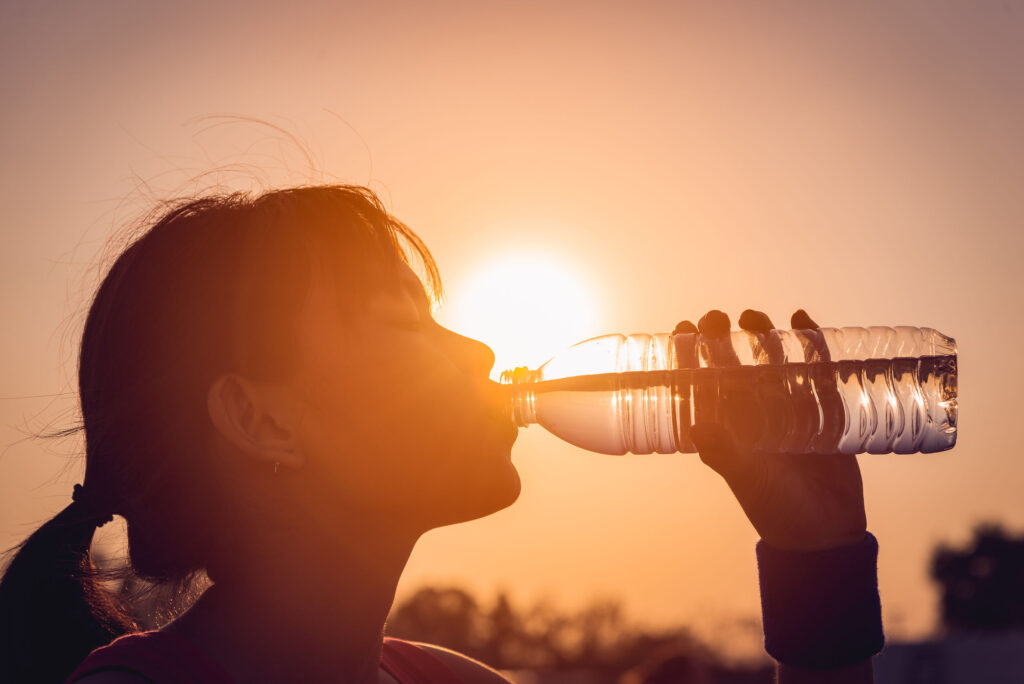
Temperatures have already exceeded 100F in some parts of America and the intense heat will remain for a few months more. With record-high temperatures in many parts of the country, it’s more important than ever to prevent heat illness by staying safe and hydrated. Although many people enjoy the blazing temperatures of summertime, heat illness can quickly turn good times into bad.
The personal injury attorneys at Lerner and Rowe hope that you and your family do everything possible to avoid heat illness while temperatures are scorching. To help you do so, here are some symptoms of heat-related illnesses to be aware of and what you can do to treat them.
Major Types of Heat Illness
High temperatures can adversely affect your body in many ways, both internally and externally. The first step in preventing heat illness is knowing what the different types are and the different warning signs. Here are the different types of heat-related sickness you should know.
Heatstroke
Heatstroke is a severe heat illness that occurs when your body’s core temperature exceeds 104F. Symptoms include:
- High body temperature
- Nausea
- Dizziness
- Confusion
- Headache
- Accelerated pulse
- Hot or red skin
- Damp or dry skin
- Loss of consciousness
Heatstroke is a medical emergency, and if you or someone you know is experiencing these symptoms, call 911 right away. While waiting for medical professionals, there are a few things you can do:
- Move the person to a cooler place
- Use cool cloths or a cool bath to lower the person’s temperature
- Apply cold compresses to the person’s armpits, neck, and groin
Heat Exhaustion
Heat exhaustion is a more common and less severe illness than heatstroke, but it can still be serious. It occurs when your body loses too much water and electrolytes through sweating. Symptoms include:
- Nausea
- Muscle cramps
- Dizziness
- Headaches
- Accelerated pulse
- Cold, pale, and/or clammy skin
- Heavy sweating
- Loss of consciousness
To treat heat exhaustion, you can:
- Move to a cool place
- Loosen your clothes
- Use cool, wet cloths to lower body temperature
- Take a cool bath
- Sip water (slowly!)
If you or anyone you know experiences heat exhaustion symptoms lasting more than one hour, symptoms worsen, or vomiting occurs, call 911 immediately.
Heat Cramps
Heat cramps occur when your body loses too much water and salt. They happen primarily during exercise, often affecting calf and abdominal muscles. However, you can experience heat cramps in any muscle. Symptoms include:
- Heavy sweating during intense exercise
- Muscle pain or spasms
If you notice these symptoms during your workout, stop and move to a cool place. You should also:
- Drink water or a sports drink with electrolytes
- Wait for cramps to subside before engaging in more physical activity
- Slowly stretch the affected muscle
You should get medical help immediately if:
- Your cramps last longer than one hour
- You’re on a low-sodium diet
- You have heart problems
Sunburn
Sunburns are a type of burn injury caused by prolonged exposure to sunlight. Most of us have had at least one sunburn in our lifetimes, but depending on the severity, sunburns can be incredibly dangerous. Signs of sunburn include skin that is:
- Painful
- Red and warm/hot
- Blistered
To treat sunburns, make sure you do the following:
- Stay out of the sun until it heals
- Use a cool cloth on affected areas
- Take a cool bath
- Use moisturizing lotion on affected areas
- Do NOT break blisters
Heat Rash
Heat rash is common, and isn’t life threatening, but you should still do your best to avoid it. To avoid heat rash, stay in a cool, dry place whenever possible, wear sunscreen, and stay hydrated. Heat rash often forms clusters of small, red blisters that often appear on the neck, groin, or elbow creases.
To treat heat rash, keep the affected area dry, and use powder to soothe.
Ways to Prevent Heat Illness
There are many things you can do to prevent heat illness. Make sure you are using sunscreen whenever you’re outdoors, even on cloudy days. One in five Americans will develop skin cancer in their lifetime, and using sunscreen can help protect you from cancers, including melanoma.
Make sure your sunscreen is:
- Broad spectrum (protects from UVA and UVB rays)
- SPF 30 or higher
- Water resistant (40-80 minutes)
- Not expired or on a recall list
You’ll generally need about one ounce of sunscreen to cover exposed areas.
It’s also vital to make sure that you’re always hydrated. Even if you feel fine, have a bottle of water on you at all times and drink more than you normally would. Proper hydration goes a long way towards preventing heat illness and heat injury. Furthermore, stay out of direct sunlight whenever possible. If you start to feel fatigued then find a cool place to sit down for a quick rest.
Contact the Personal Injury Attorneys at Lerner and Rowe
Lerner and Rowe Injury Attorneys hope that you and your family follow this guide to prevent heat illness. Unfortunately, it’s possible to suffer heat illness through the negligence of another party. If you believe that a business or other entity created unsafe conditions that caused you to suffer heat sickness, then please contact us immediately.
You can reach us 24 hours a day, 7 days a week — even on summer holidays. Our team is available by phone at 844-977-1900 and through the Internet through LiveChat and secure online form.



